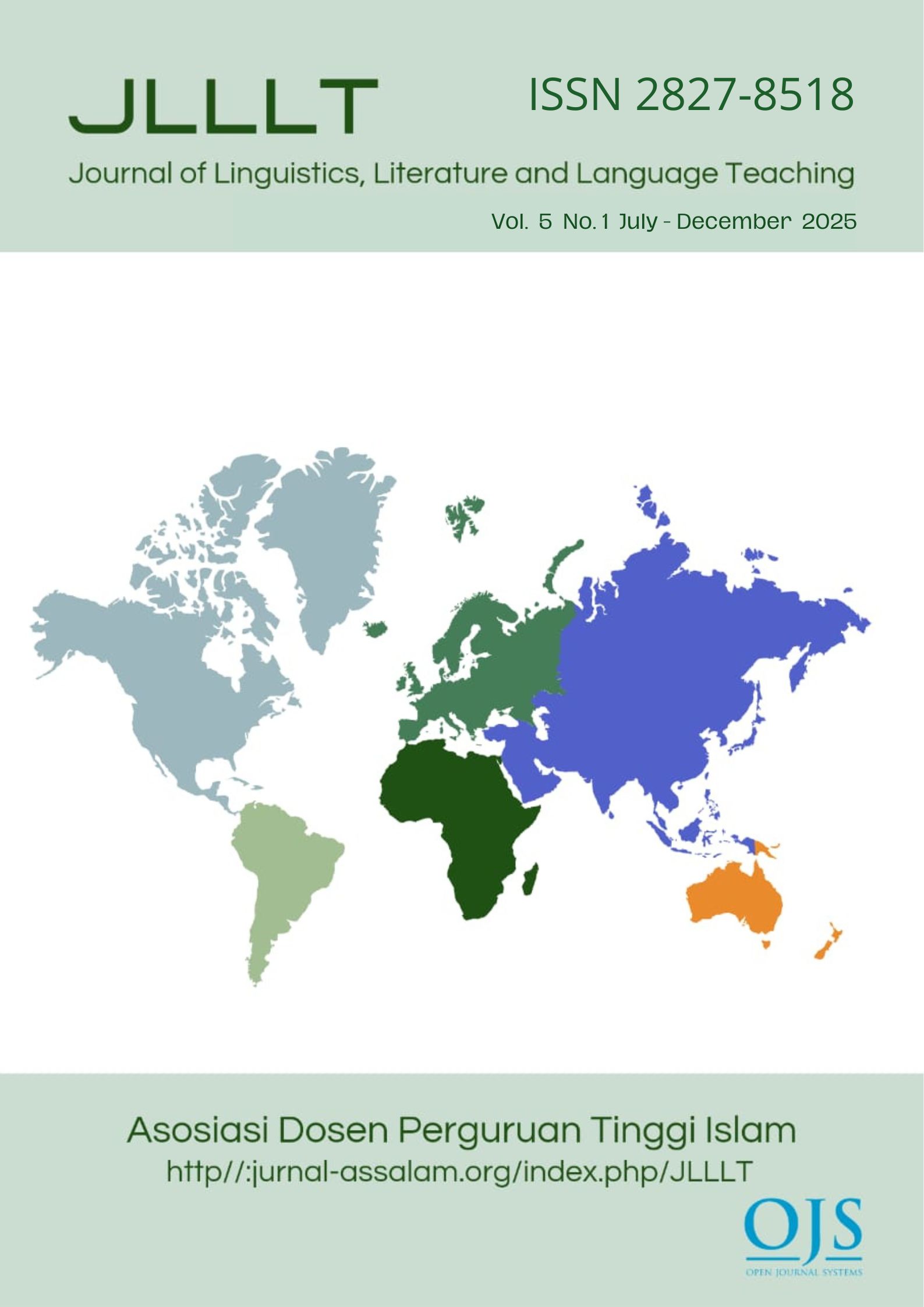Demographic Factors Influencing Learner Autonomy among Indonesian EFL Students: A Quantitative Study
DOI:
https://doi.org/10.37249/jlllt.v5i1.891Keywords:
Gender, Region of Origin, Faculty Affiliation, Learner Autonomy, EFLAbstract
This study explores how selected demographic factors, gender, language proficiency level, region of origin, faculty affiliation, and field of study relate to learner autonomy among English as a Foreign Language (EFL) students at Universitas Pamulang. Grounded in the constructivist view of learning and self-regulated learning theory, the research employed a quantitative survey using Biçer's (2017) Learner Autonomy Scale, with 80 students participating. Due to non-normal data distribution, non-parametric tests were used in the analysis. This study uniquely shows that only gender has a statistically significant effect on learner autonomy, with female students demonstrating higher autonomy in both planning and learning process dimensions. In contrast, no significant differences were found for the other demographic variables. These findings suggest that while some background characteristics like gender may influence learner autonomy, broader factors such as classroom practices, instructional design, and learner agency play a more central role. The study contributes to the EFL field by highlighting the limited role of static demographic factors and reaffirming the importance of pedagogical strategies that foster autonomy in diverse learner populations.
Downloads
References
Benson, P. (2001). Teaching and researching autonomy in language learning. Harlow, England: Pearson Education Limited.
Benson, P. (2011). Teaching and researching autonomy (2nd ed.). London: Routledge.
Borg, S., & Al-Busaidi, S. (2012). Learner autonomy: English language teachers' beliefs and practices. London: British Council.
Bruner, J. S. (1996). The Culture of Education. Cambridge: Harvard University Press.
Creswell, J. W. (2012). Educational Research: Planning, Conducting, and Evaluating Quantitative and Qualitative Research (4th ed.). Boston: Pearson.
Dam, L. (1995). Learner autonomy 3: From theory to classroom practice. Dublin: Authentik.
Depdiknas. (2006). Peraturan Menteri Pendidikan Nasional Republik Indonesia Nomor 22 Tahun 2006 tentang Standar Isi untuk Satuan Pendidikan Dasar dan Menengah. Jakarta: Departemen Pendidikan Nasional.
DeVellis, R. F. (2016). Scale development: Theory and Applications (4th ed.). Thousand Oaks: Sage Publications.
Fosnot, C. T. (2013). Constructivism: Theory, Perspectives, and Practice (2nd ed.). New York: Teachers College Press.
Fotiadou, A., Angelaki, C., & Mavroidis, I. (2017). Learner autonomy as a factor of the learning process in distance education. European Journal of Open, Distance and E-Learning, 20(1), 95–111.
Holec, H. (1981). Autonomy and foreign language learning. Oxford: Pergamon Press.
Kemendikbud. (2013). Peraturan Menteri Pendidikan dan Kebudayaan Republik Indonesia Nomor 81A Tahun 2013 tentang Implementasi Kurikulum. Jakarta: Kementerian Pendidikan dan Kebudayaan.
Kurt, A. (2024). Supporting Every Learner: Investigating Gender Differences in Autonomy. Innovational Research in ELT, 5(1). https://doi.org/10.29329/irelt.2024.1045.3
Lamb, M. (2017). The Motivational Dimension of Language Learner Autonomy. Language Teaching, 5(1), 97–115. https://doi.org/https://doi.org/10.1017/S0261444816000034
Little, D. (2007). Language learner autonomy: Some fundamental considerations revisited. Innovation in Language Learning and Teaching, 1(1), 14–29. https://doi.org/https://doi.org/10.2167/illt040.0
Little, D. (2009). Language learner autonomy and the European Language Portfolio: Two L2 English examples. Language Teaching, 42(2), 222–233. https://doi.org/10.1017/S0261444808005636
Reinders, H. (2010). Towards a classroom pedagogy for learner autonomy: A framework of independent language learning skills. Australian Journal of Teacher Education, 35(5), 40–55. https://doi.org/10.14221/ajte.2010v35n5.4
Ryan, R. M., & Deci, E. L. (2000). Intrinsic and extrinsic motivations: Classic definitions and new directions. Contemporary Educational Psychology, 25(1), 54–67. https://doi.org/https://doi.org/10.1006/ceps.1999.1020
Scharle, Á., & Szabó, A. (2000). Learner Autonomy: A Guide to Developing Learner Responsibility. Cambridge: Cambridge University Press.
Tatar, M., & Horenczyk, G. (2003). Diversity-related burnout among teachers. Teaching and Teacher Education, 19(4), 397–408. https://doi.org/10.1016/S0742-051X(03)00024-6
Ushioda, E. (2011). Motivating learners to speak as themselves. In G. Murray, X. Gao, & T. Lamb (Eds.), Identity, motivation and autonomy in language learning (pp. 11–24). Bristol: Multilingual Matters.
Zimmerman, B. J. (2002). Becoming a self-regulated learner: An overview. Theory into Practice, 41(2), 64–70. https://doi.org/10.1207/s15430421tip4102_2
Downloads
Published
How to Cite
Issue
Section
License
Copyright (c) 2025 Nurul Ashri

This work is licensed under a Creative Commons Attribution-ShareAlike 4.0 International License.





.png)














